Our mid-March adventure took us to Valencia, Spain for Las Fallas with our Swedish/Spanish friends (we’ll get back to them in a bit). Jeff and I had heard about this festival in Spain where they build these beautiful sculptures then burn them to the ground on the last day. Without knowing much more, we decided to go and bought our plane tickets. What could be better than a festival where everything is burned…besides Burning Man?
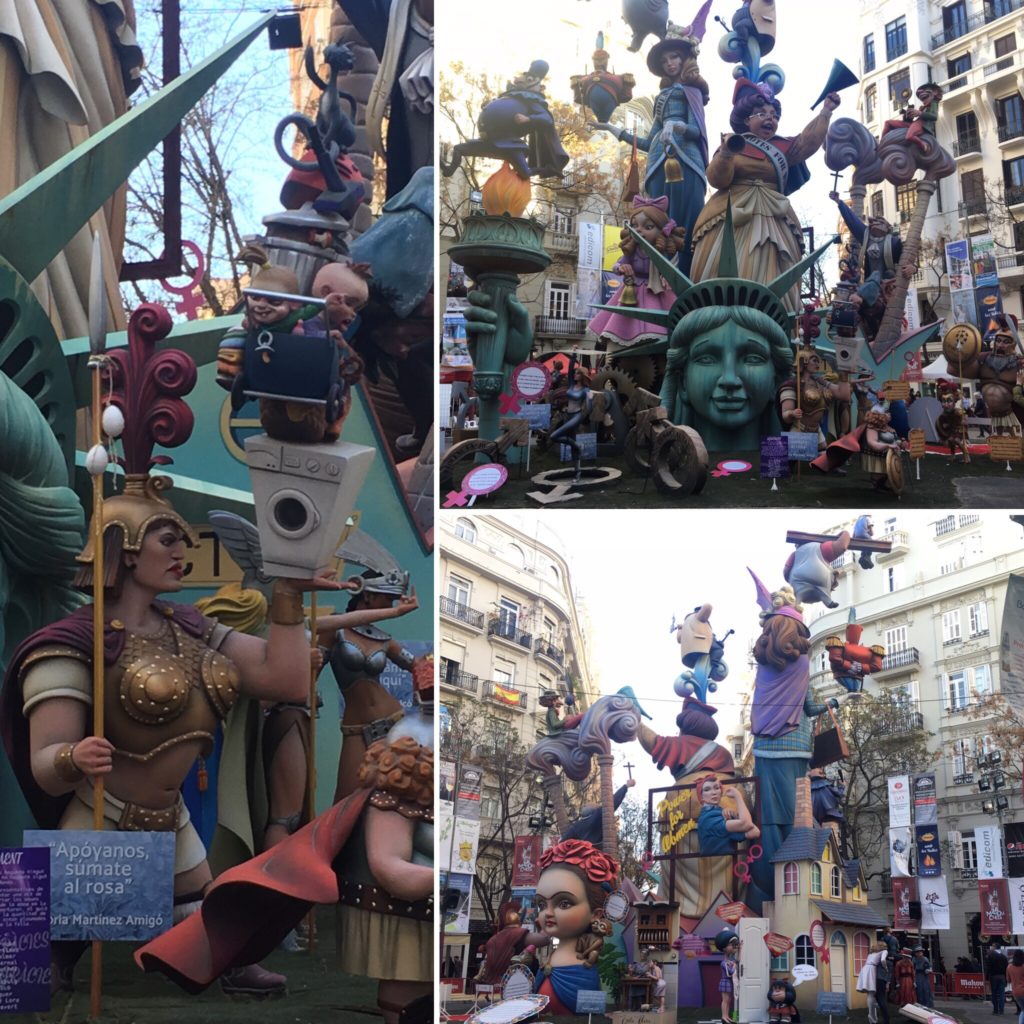
Year of the Woman!
A little background: Each year the many different neighborhoods in Valencia (around 350) sponsor and build a Fallas* composed of ninots** that are based on a broad theme. Sometimes the theme is satirical and usually focuses on local, national or world politics and events. Sometimes the theme pokes fun at trending societal norms and daily life. Familiar faces (celebrities, world leaders, and famous locals) make up the ninots which help tell the story, compose the theme and make up the gigantic Fallas standing between 35-50 feet tall.
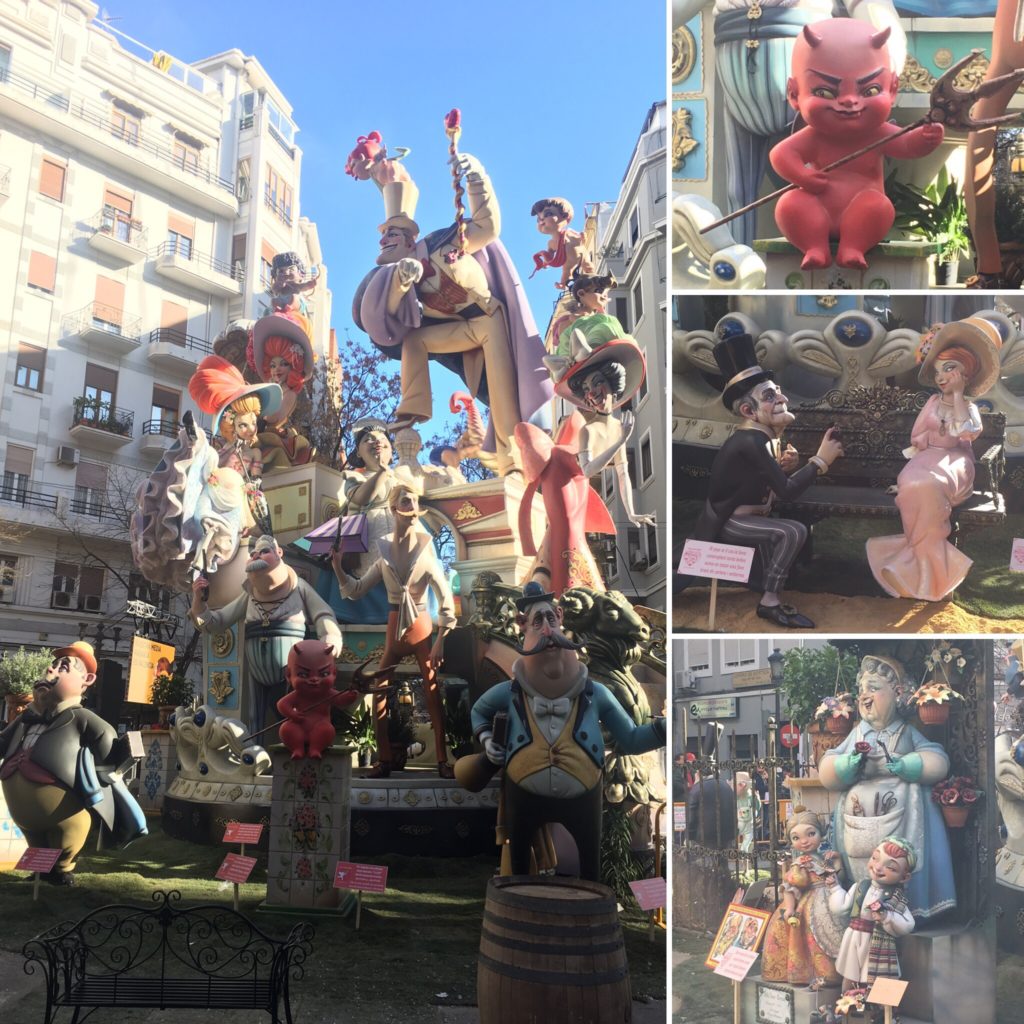
Fallas and Ninots
*Fallas means fire and refers to both the festival as well as the large statues/structures created.
**Ninot is a smaller statue. Many ninots together create a Fallas.
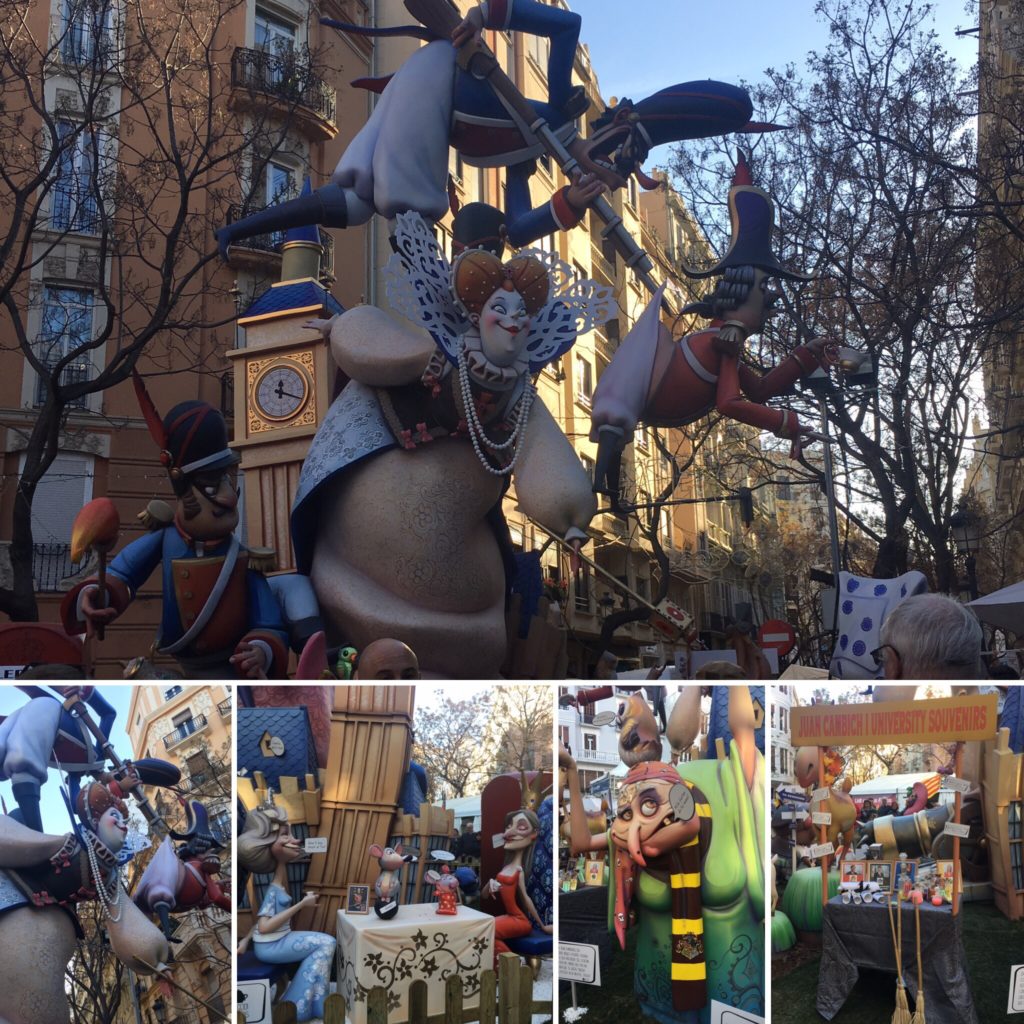
Brexit
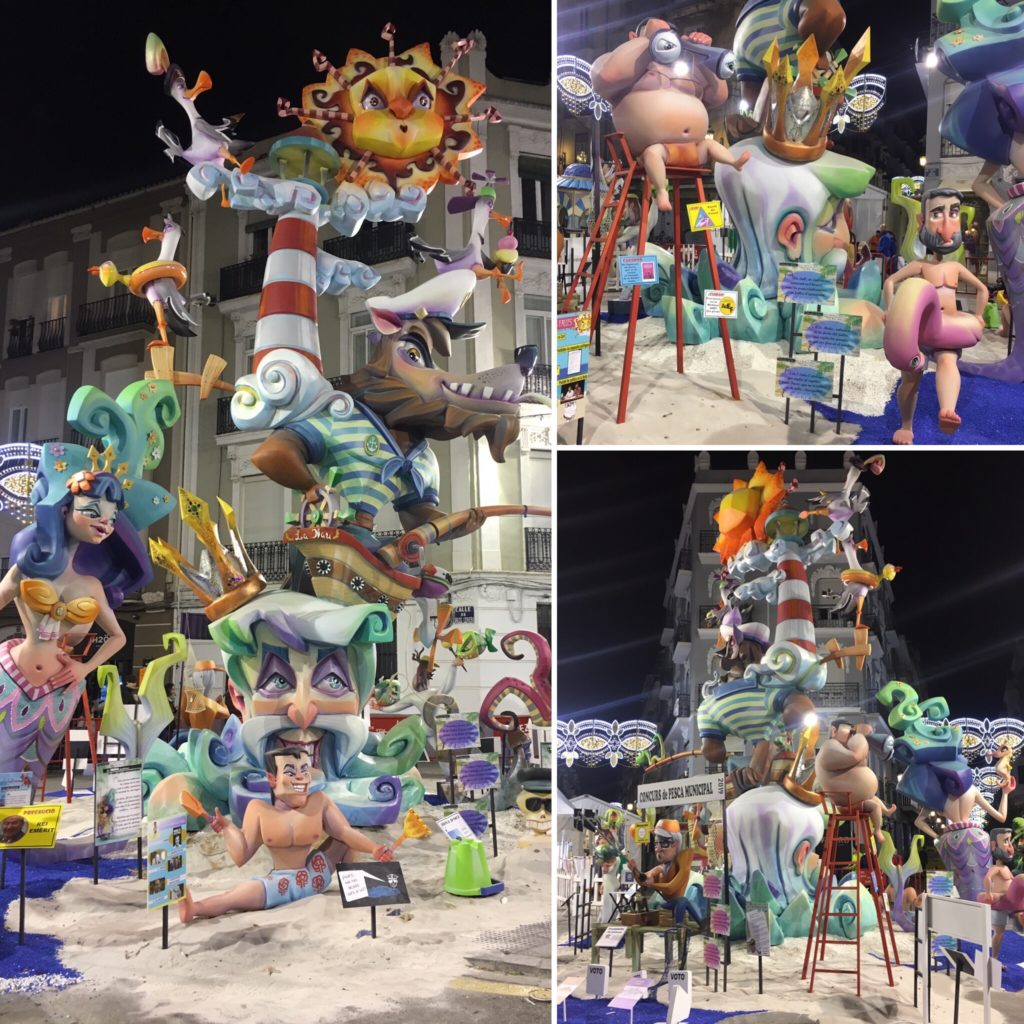
Beachy Keen!
Where did this tradition stem from? Great question, I’m so glad you asked. In the 15th century, carpenters in Valencia would have to work by candle light and special lanterns in the evening during the winter months. The eve before the spring equinox and subsequently also the day of Saint Joseph, the patron saint of carpentry (March 19), the carpenters would stack their wood scraps, candle wax, and other junk they found when spring cleaning into the middle of the street and set it a blaze! By the end of the 18th century the wood scraps were formed to look like people, usually celebrating well known locals.
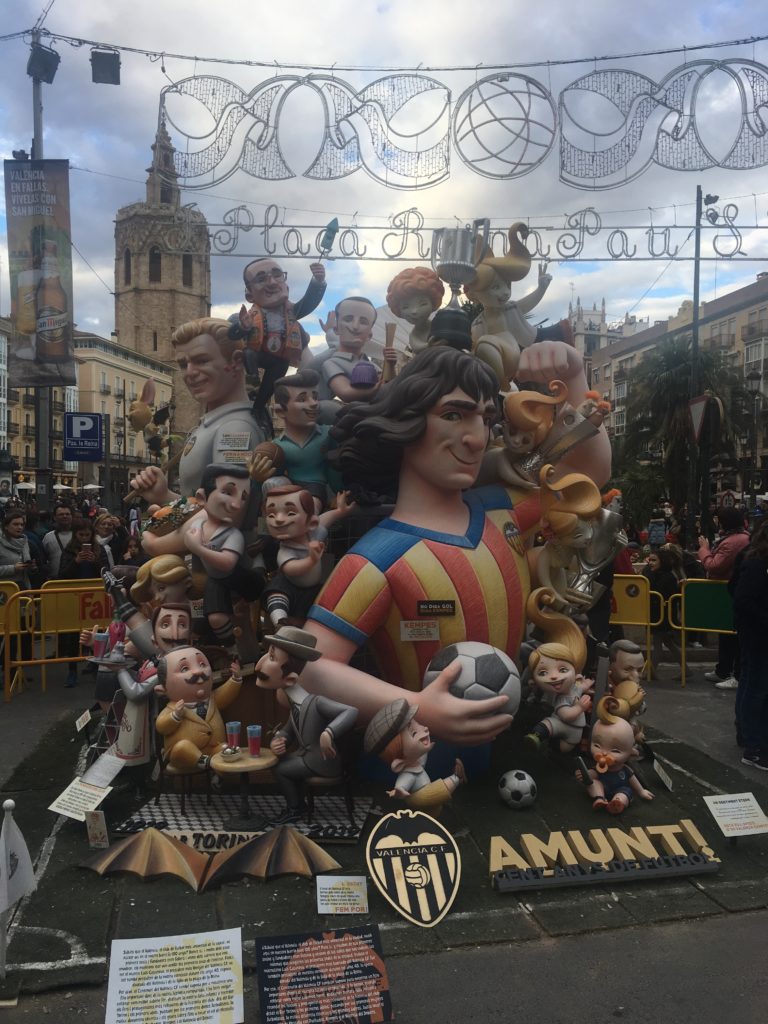
Well known locals
So…way back when the fallas were made out of wood, candle wax and junk, what are they made of now? Again, excellent question. Now, the ninots and fallas are made of wood and papier-mâché. Artists spend hundreds of hours meticulously constructing, sanding and painting the papier-mâché ninots. The artists and designers get one day, March 15, to take all of the ninots and erect the fallas in the middle of the street. Reminder, there are at least 350 of these being constructed at the same time and that just talks about the large fallas. Each neighborhood also sponsors a fallas infantiles or children’s smaller fallas only about one-third the size of the regular fallas. There are 600+ fallas, large and small, around Valencia during the festival.
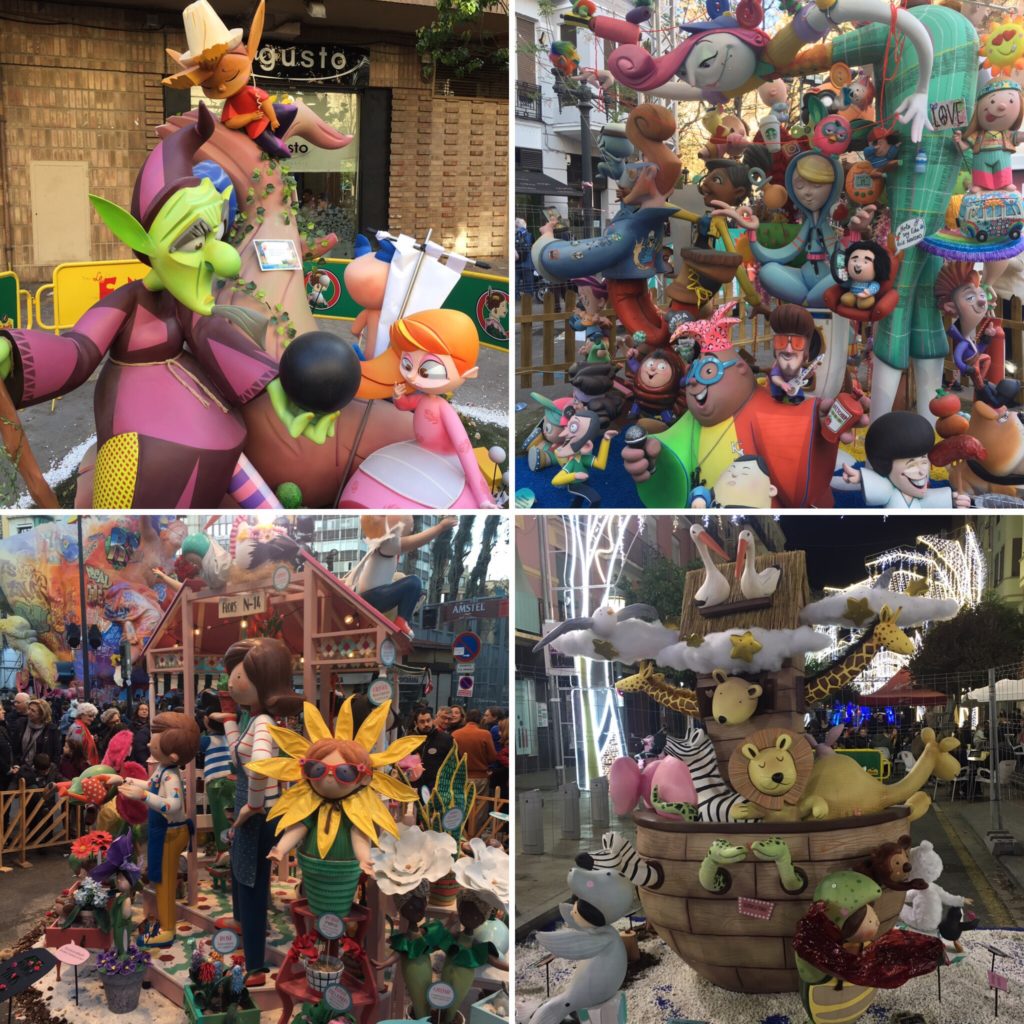
Fallas Infantiles
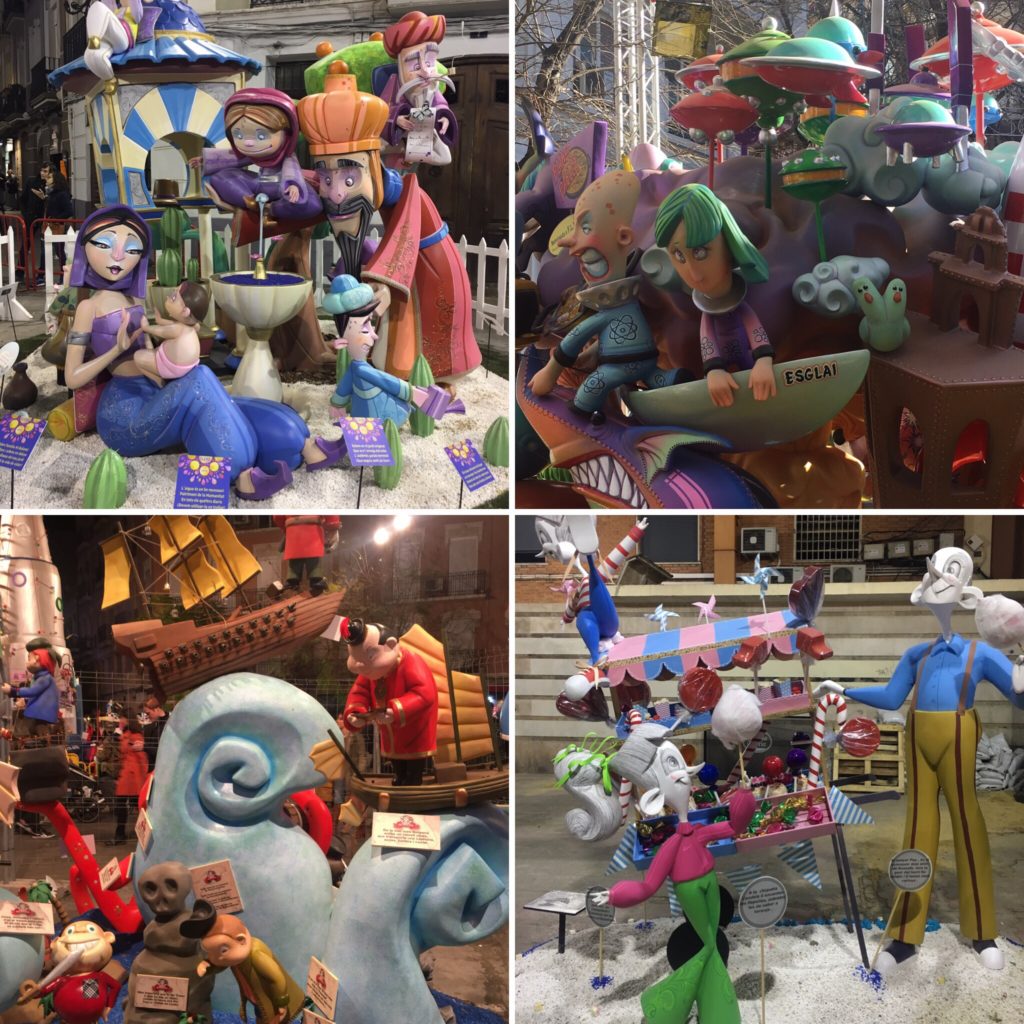
Children’s Fallas
So what exactly happens? When do we get to the burning of these beautiful sculptures? Patrons of each neighborhood walk to the Plaza de la Virgen in traditional Valencia costume with an offering of flowers for the Virgin Mary as Our Lady of the Forsaken. These flower offerings then cover the statue of the Virgin Mary…no, she does not go up in flames during this festival. Women are dressed in beautiful bodices and flowing skirts of various colors with their hair plaited and decorated with gold pins and covered in veils of lace. Many of the dresses have been in the families for generations and even serve as wedding dresses. Men, also known as falleros are dressed like pirates in black pants, black jacket, white shirt and colorful scarves and tend to carry flasks.
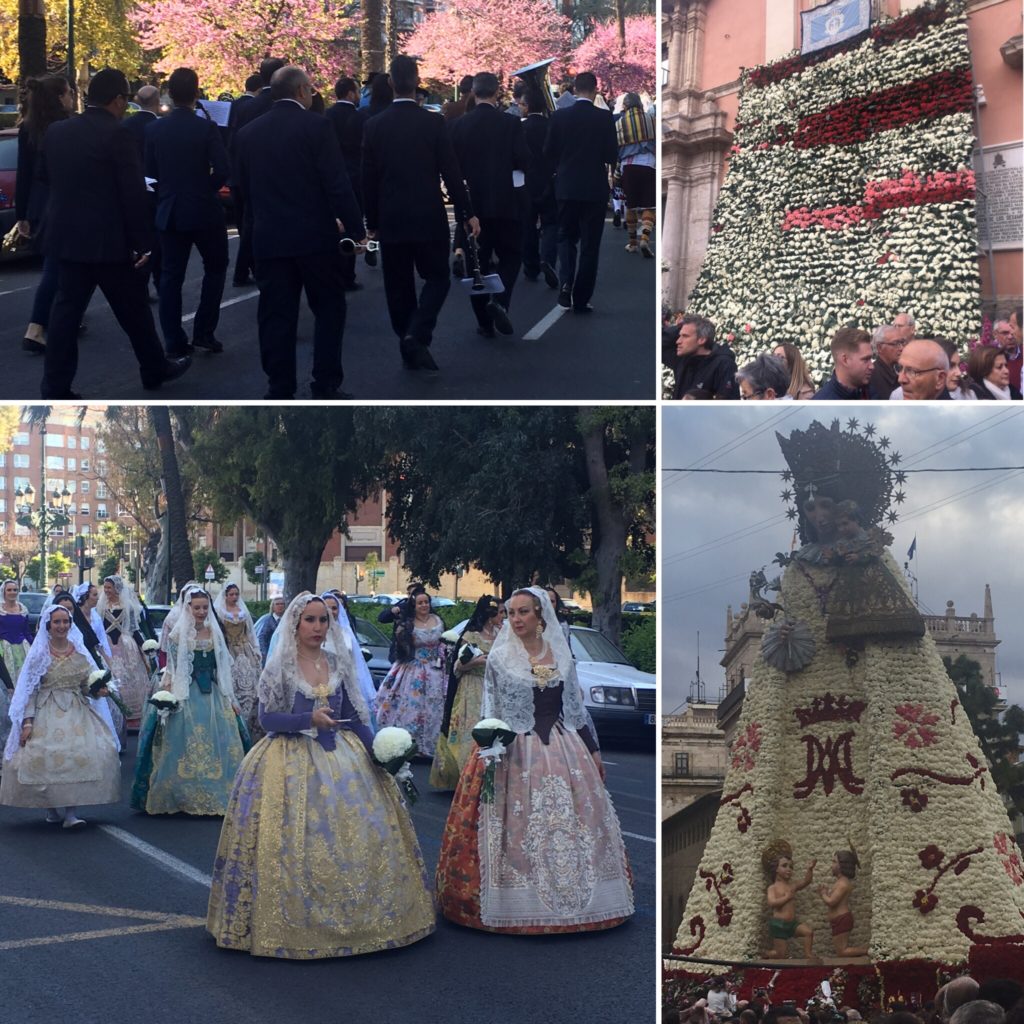
Traditional dress, band, parade and flower offering.
A band, las desperta, is placed at the start of each neighborhood parade and firecrackers follow. Speaking of firecrackers, everyone and I mean everyone is either throwing poppers or lighting firecrackers. The bigger and louder the noise, the better. There is also a fire parade, Cavalcada de Foc, leading the casal faller or fire starters through the streets to their respective falla and incorporate colorful, noisy fire displays.
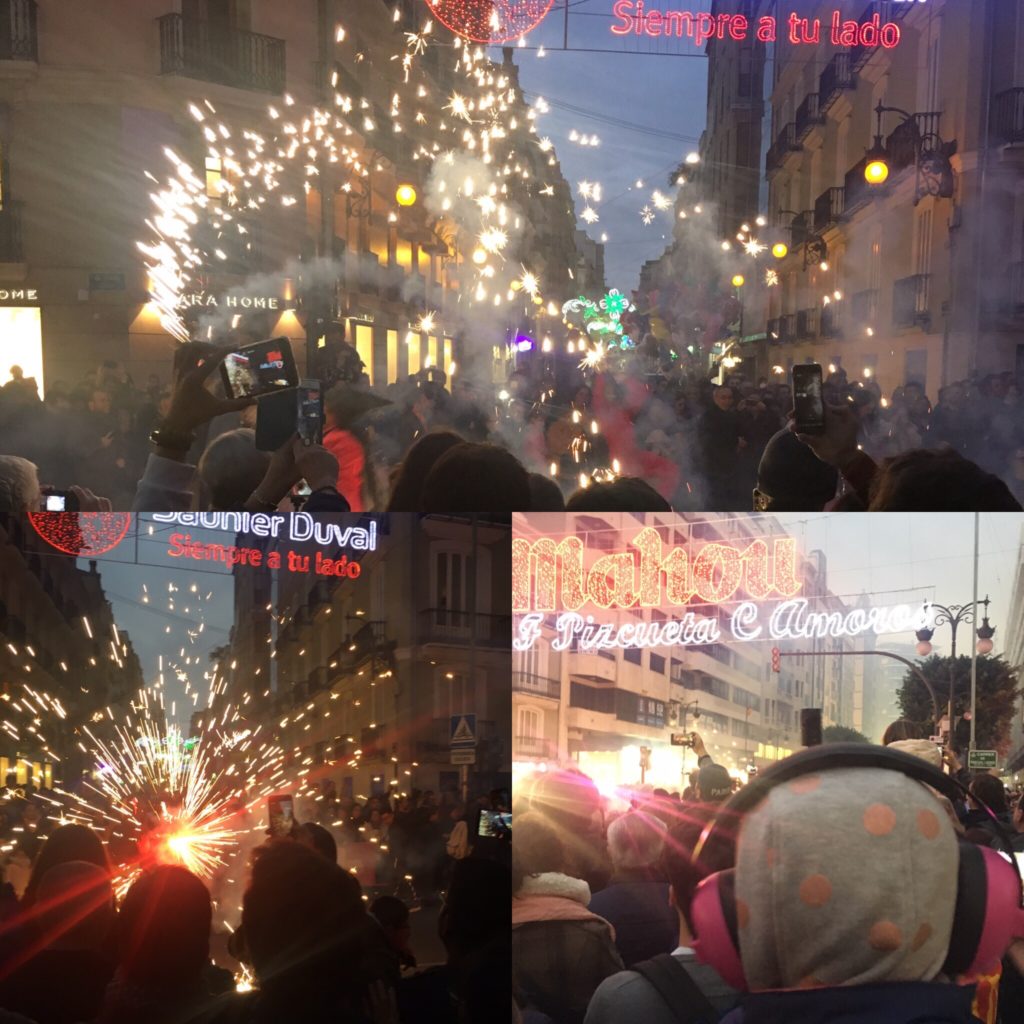
Cavalcada de Foc or Fire Parade
March 19 at 10:00 pm (22:00) around the city, the smaller fallas, fallas infantiles, are lit. The larger structures don’t burn until 12:00 am (00:00) the morning of March 20. Fireworks are places inside and around the fallas to start the burning of these incredibly beautiful structures also known as La Crema. After a 5-10 minute firework display (in each neighborhood at each fallas) that rivals 4th of July firework displays in the states, the fallas eventually catches fire and they burn baby, burn. From start to finish the entire fallas has burnt to the ground in around 30 min leaving nothing behind but a smoldering pile of rubble. By morning, clean up has happened and one would never have guessed that these magnificent structures had even existed.
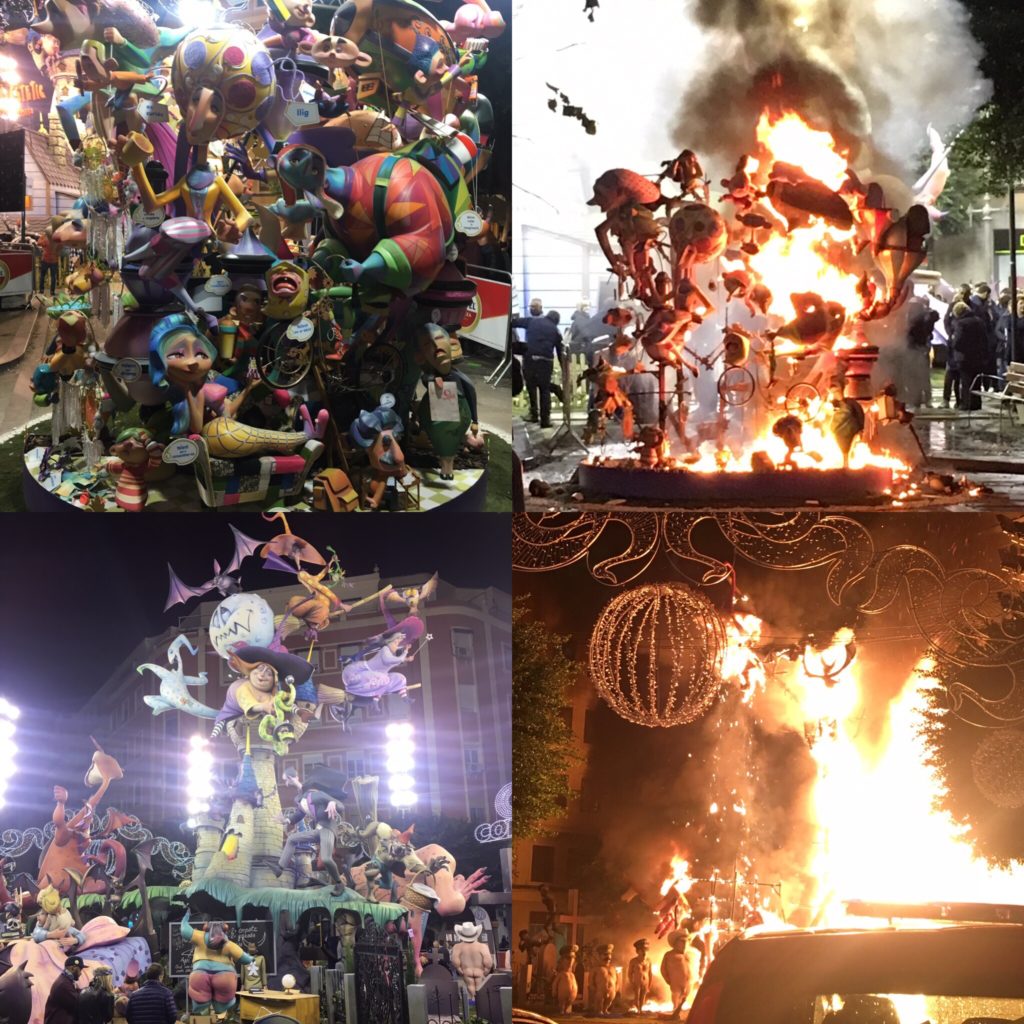
Falla and Falla Infantile before and after.
Back to our Swedish/Spanish friends. Jeff and I met them on our honeymoon cruise in 2016. They had delicious looking deserts so I just had to ask what they ordered and if it was any good. My inquiry about sweet treats led to a wonderful conversation and lifelong friends. They were so kind to visit us in Chicago for New Year 2017 and we were finally able to visit them this year in Spain! We spent a few days with them in Torrevieja before heading to Valencia. Their hospitality is unmatched! We had an extraordinary visit and hope to see them again soon.
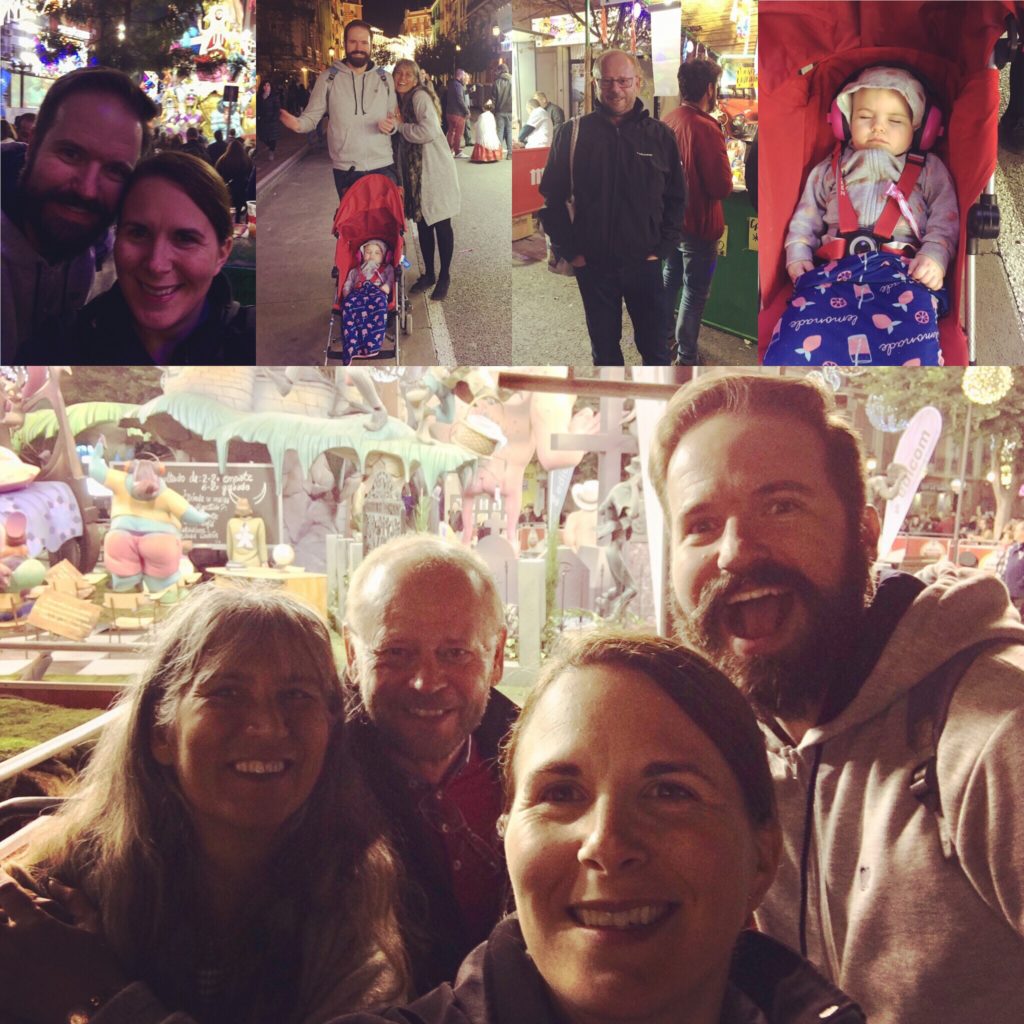
Our Swedish/Spanish Friends